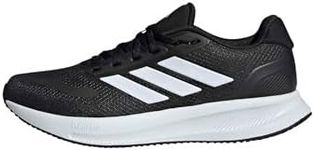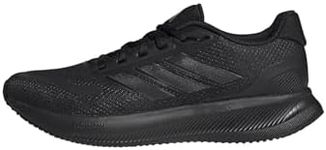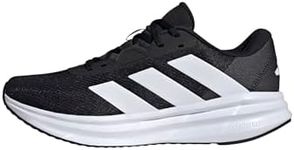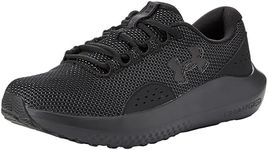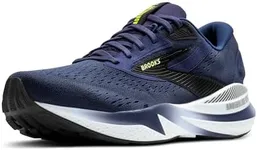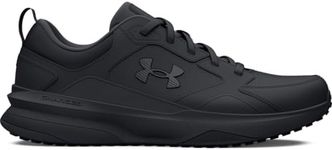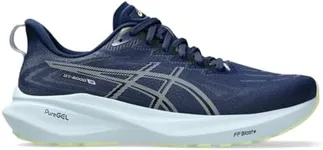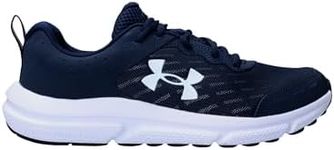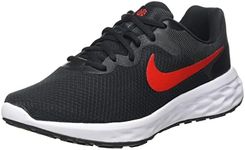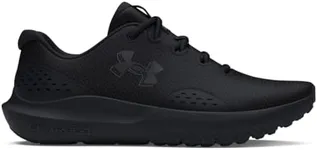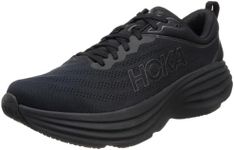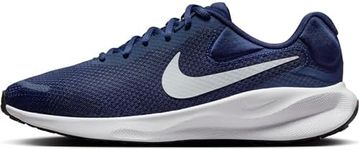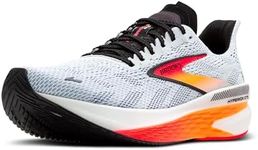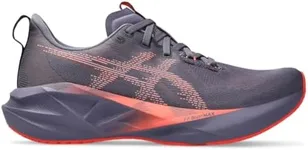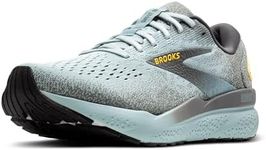Buying Guide for the Best Running Shoes
Choosing the right running shoes is crucial for comfort, performance, and injury prevention. The right pair of running shoes can make a significant difference in your running experience, whether you're a beginner or an experienced runner. When selecting running shoes, consider factors such as your running style, the type of terrain you'll be running on, and any specific needs or preferences you may have. Here are some key specifications to consider when choosing running shoes and how to navigate them to find the best fit for you.CushioningCushioning refers to the amount of padding in the shoe, which affects comfort and shock absorption. This is important because it can help reduce the impact on your joints and muscles while running. Cushioning levels can range from minimal to maximum. Minimal cushioning is suitable for runners who prefer a more natural feel and have a strong running form. Moderate cushioning offers a balance of comfort and responsiveness, making it a good choice for most runners. Maximum cushioning provides the most comfort and shock absorption, ideal for long-distance runners or those with joint issues. Consider your running distance, terrain, and personal comfort preferences when choosing the right level of cushioning.
SupportSupport in running shoes refers to the stability and structure provided to your feet, which can help prevent overpronation (excessive inward rolling of the foot) or underpronation (insufficient inward rolling). This is important for maintaining proper alignment and reducing the risk of injuries. Support levels can be categorized into neutral, stability, and motion control. Neutral shoes are best for runners with a normal arch and minimal pronation. Stability shoes offer added support for mild to moderate overpronation. Motion control shoes provide maximum support for severe overpronation. To determine the right support level, consider your arch type and pronation pattern, which can be assessed through a gait analysis at a specialty running store.
FitThe fit of running shoes is crucial for comfort and performance. A proper fit ensures that your feet have enough room to move without slipping or feeling too tight. This is important to prevent blisters, discomfort, and potential injuries. When trying on running shoes, make sure there is about a thumb's width of space between your longest toe and the end of the shoe. The shoe should feel snug around the midfoot and heel but not too tight. Consider the shape of your foot, including width and arch height, and try on shoes at the end of the day when your feet are slightly swollen to ensure the best fit.
WeightThe weight of running shoes can affect your running efficiency and speed. Lighter shoes can help you run faster and feel less fatigued, while heavier shoes may provide more durability and support. This is important for optimizing your performance based on your running goals. Lightweight shoes are ideal for racing and speedwork, as they allow for quicker movements. Midweight shoes offer a balance of lightness and support, suitable for everyday training. Heavier shoes are more durable and provide extra cushioning and support, making them a good choice for long-distance running or trail running. Consider your running goals and the type of runs you'll be doing when choosing the right shoe weight.
TerrainThe type of terrain you'll be running on can influence the type of running shoes you need. Different terrains require different levels of traction, support, and durability. This is important to ensure safety and optimal performance. Road running shoes are designed for pavement and offer a smooth, cushioned ride with good shock absorption. Trail running shoes have more aggressive outsoles for better grip on uneven and slippery surfaces, as well as added protection and durability. Hybrid shoes can handle both road and light trail running, offering versatility. Consider where you'll be running most often and choose shoes that are designed for that specific terrain.
BreathabilityBreathability refers to how well the running shoes allow air to circulate, keeping your feet cool and dry. This is important for comfort and preventing blisters and other foot issues. Breathable shoes typically have mesh or other ventilated materials in the upper part of the shoe. High breathability is ideal for running in hot and humid conditions, as it helps to keep your feet cool and dry. Moderate breathability is suitable for most running conditions, providing a balance of ventilation and protection. Low breathability may be better for cold weather running, as it helps to keep your feet warm. Consider the climate and conditions you'll be running in when choosing the level of breathability.
